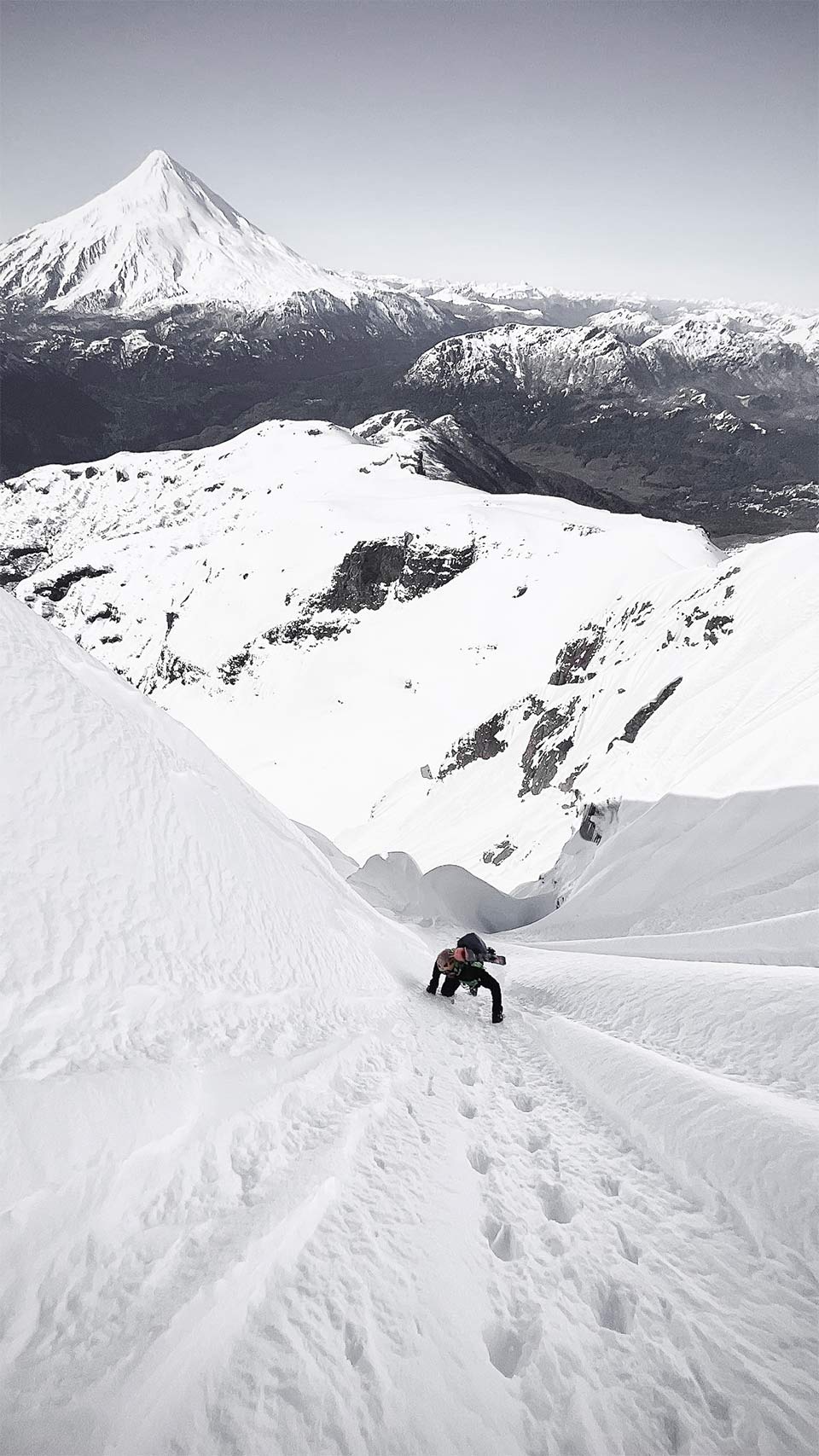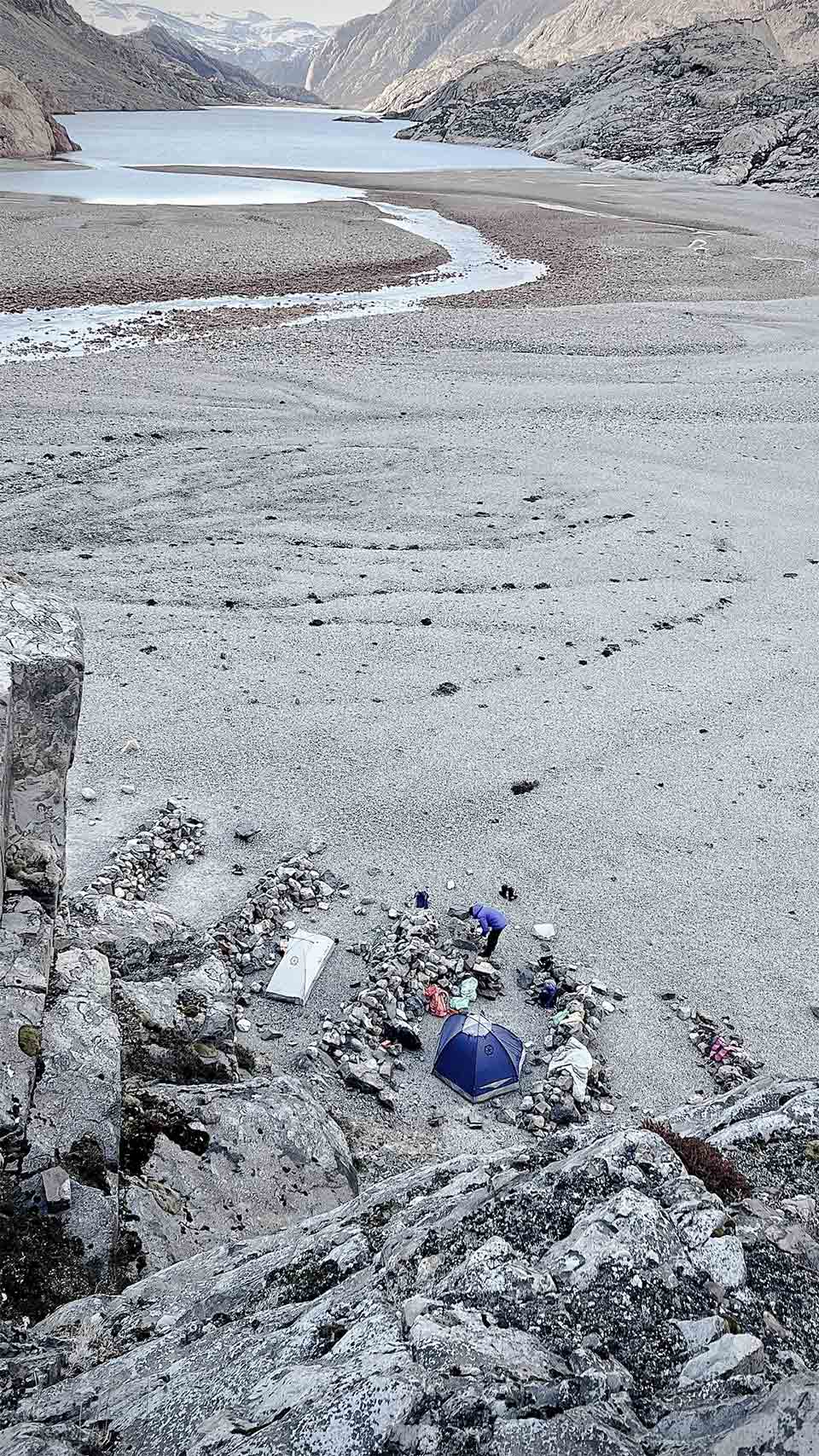

SAMAYA x PIERRE HOURTICQ
STEEP SKIING IN PATAGONIA

Pierre Hourticq and Julián Cazanova, guides and experienced skiers, accompanied by Camille Armand, professional snowboarder, and Yannick Boissenot, videographer and film-maker, spent September 2023 travelling the length and breadth of Patagonia, in search of the best steep faces. For Samaya, they look back on their adventure.
Pierre Hourticq: We were in Patagonia from September to early October, spending part of our time with Julián. We're both guides with the Compagnie des Guides de Chamonix, and he's originally from there. We've been skiing together for a long time, and the idea of a steep-slope skiing mission in this area had been nagging at us for some time.
There were 3 of us skiing, Julián and I, accompanied by Freeride World Tour snowboarder Camille Armand. Yannick Boissenot followed us throughout the expedition to capture all our images and make a film. We were a very small team, which allowed us to be super mobile.
We first arrived in Buenos Aires, which we left immediately to head for Julián's childhood village in the very north of Argentina. From San Martín de los Andes, we embarked on a 2,000-kilometer road trip in a 4x4, crossing miles and miles of asphalt on those long, monotonous roads, until we reached El Chaltén.
All along the way, we had set ourselves a number of stops and objectives in remote areas between Chile and Argentina for skiing. We made stops in untouched, unspoilt areas. Some areas had hardly ever been reached by civilization, or at least not on skis.

Julián Cazanova: We had to deal with a number of setbacks, and things didn't always turn out as we'd hoped. The weather conditions were mild, but the amount of snow was impressive! Usually, at this time of year, we don't find so much. It was quite extraordinary. The first outing we took greeted us with a lot of snow. Probably a bit too much!
Halfway through our roadtrip to El Chaltén, we made our way to a very remote mountain, somewhat lost in the middle of nowhere. It was a place I'd been scouting for a long time. When we arrived, we immediately realized that there was a lot of snow. It slowed us down a lot. It was at the very beginning of the trip, and it had already taken us two days to get there by 4x4, then we had to take a boat, then do a day's walk: we were very isolated. Over there, if you have a problem, there's no helicopter to come and get you.
Pierre Hourticq : After that difficult start, we let the snowpack stabilize and our luck changed. After that, we had nothing but great experiences. I'm thinking in particular of an extraordinary descent, in a corner Julián had spotted, towards El Chaltén. Since 2003, Julián has been spending time in this area, which he knows by heart and in which he climbs, even though the area is only documented by a few climbing guidebooks. He had always imagined skiing here.


Julián Cazanova : The access was very long. We had to walk 30 kilometers, flat out, just to reach the foot of Aiguille Dumbo. We walked without really knowing what would happen next. We were full of doubts. This was a west face, exposed to the wind. We were making progress without even seeing the mountain, right up to the very end! We finally attacked the climb, and our excitement was building in parallel: we knew it was going to be magnificent to descend. We finally reached the summit, filled with mushrooms. You can't imagine putting your skis down here! Nevertheless, we put on our skis and attacked the descent, leaving us with unforgettable images and thrills.
We continued on our way, happy to realize that a sizeable weather window was opening up. It was quite abnormal, actually. This window enabled us to make 10 runs over the entire trip, including 4 outings to El Chaltén and several beautiful line openings.
Pierre Hourticq : At El Chaltén, our organization was always more or less the same: for an outing, we'd leave for at least 2 days, the time it took to make the approach, bivouac in the snowy woods, reach our mission departure point and return. To maximize our chances of achieving something, we would combine our objectives, always trying to find 2 feasible options. It's like that when you go to Patagonia, you have to be very open and have several plans, because if you focus your attention on a single objective, which ends up being unachievable because of bad weather, you end up having done nothing.
We were extremely lucky with the snow conditions. Usually, the snow is not of excellent quality, frequently blown and hard. This year, we found plenty of powder.

Julián Cazanova : When the weather window closed, we debated whether to stay in El Chaltén and wait for the next window. In the end, we headed north, to explore my region on the Chilean side and ski these beautiful mountains and volcanoes.
Spring was gradually gaining ground, and snow conditions were gradually changing, but the terrain remained safe, which was the main thing for us.
Pierre Hourticq : We skied on all types of skiable terrain in Patagonia: more accessible and less technically challenging areas, small couloirs in the resorts and very alpine, technical faces, like you find here in the Alps. It was great to be able to try out a bit of everything in a new environment.
An important aspect of our trip was meeting Julián's locals and friends. We spent a lot of time together, particularly in the north, where we met mountain herders who never come across tourists and who were very surprised by our arrival and our idea of going skiing on the slopes of their beautiful mountains.
It's moments like these that make this expedition all the more memorable.





